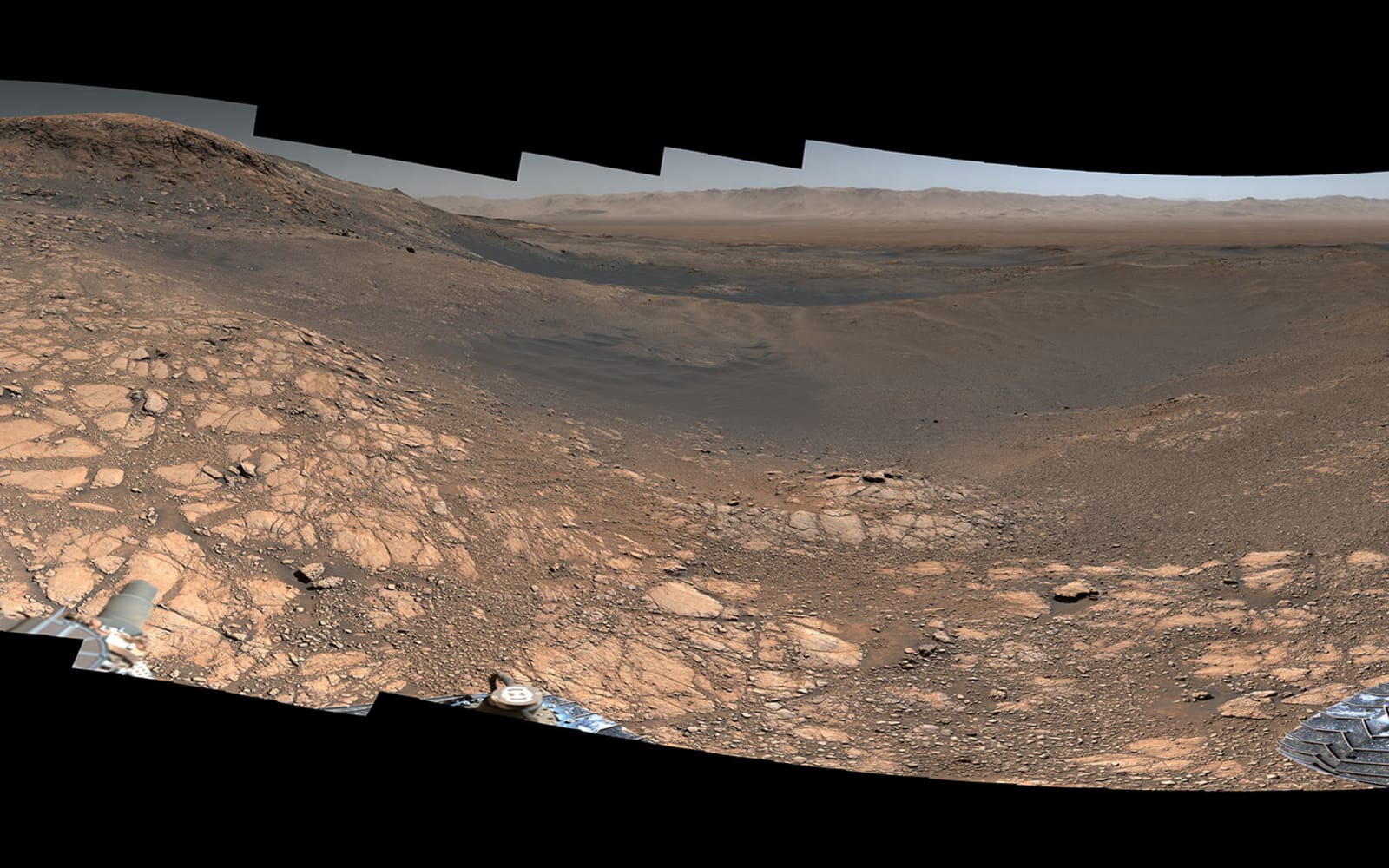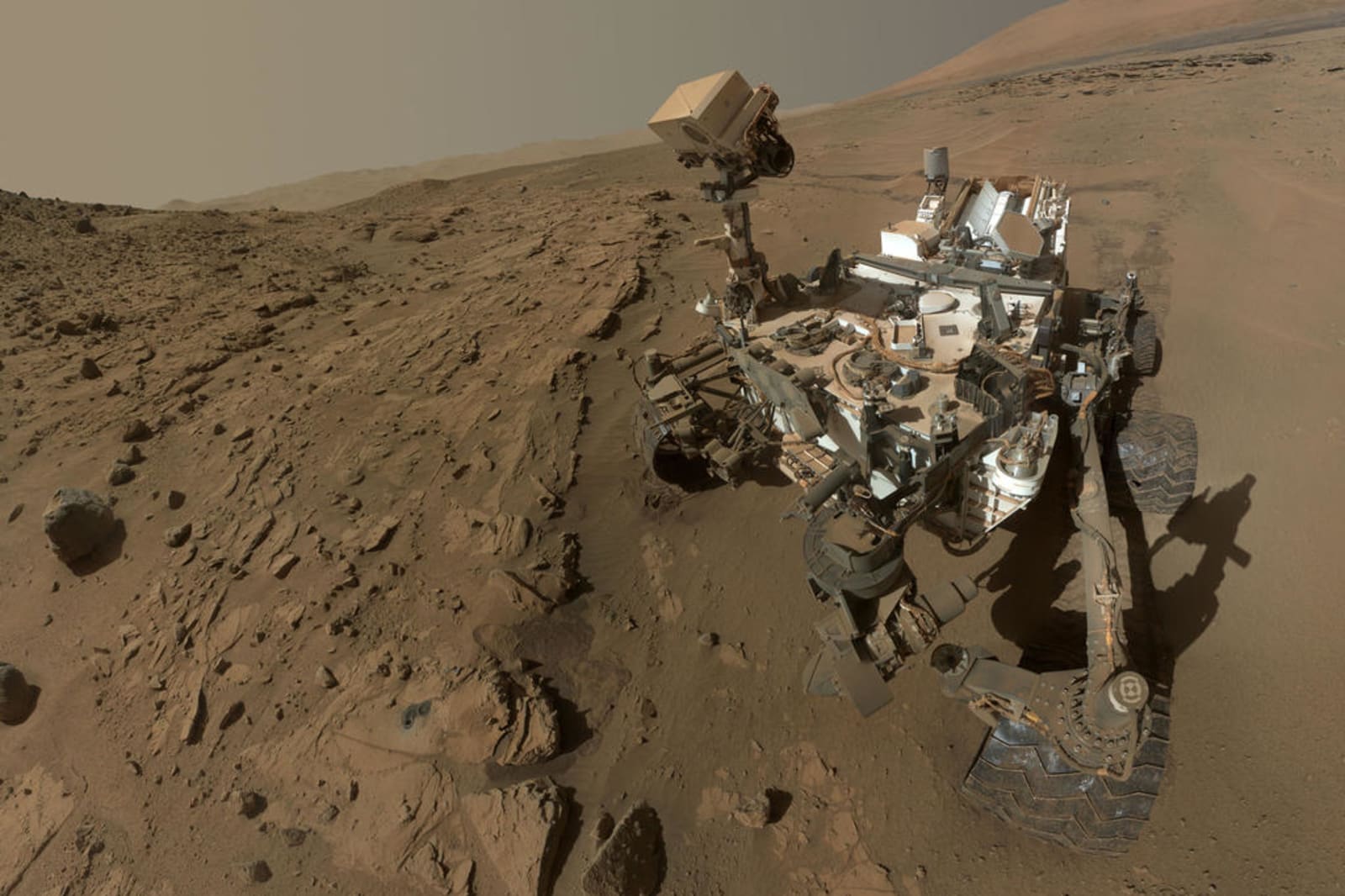
Curiosity may have spent a while limbering up for the mission ahead, but now it's found evidence of an ancient streambed on Mars that once had "vigorous" water flow. Photos of two rock outcroppings taken by the rover's mast camera between the north rim of Gale Crater and the foot of Mount Sharp reveal gravel embedded into a layer of conglomerate rock. The shape of the small stones indicate to NASA JPL scientists that they were previously moved, and their size (think from grains of sand to golf balls) are a telltale sign that water did the work instead of wind. Evidence of H2O on Mars has been spotted before, but this is the first direct look at the composition of riverbeds NASA has observed from above.
According to Curiosity science co-investigator William Dietrich, it's estimated that water flowed at the site anywhere from thousands to millions of years ago, moved at a clip of roughly 3 feet per second and was somewhere between ankle and hip deep. "A long-flowing stream can be a habitable environment," Mars Science Laboratory Project Scientist John Grotzinger said. "It is not our top choice as an environment for preservation of organics, though. We're still going to Mount Sharp, but this is insurance that we have already found our first potentially habitable environment."
Continue reading NASA's Curiosity rover finds ancient streambed on Mars, evidence of 'vigorous' water flow
Filed under: Science, Alt
NASA's Curiosity rover finds ancient streambed on Mars, evidence of 'vigorous' water flow originally appeared on Engadget on Fri, 28 Sep 2012 02:28:00 EDT. Please see our terms for use of feeds.
Permalink  Computer World, CNN
Computer World, CNN |
 NASA (JPL)
NASA (JPL) |
Email this |
Comments
 NASA's Curiosity rover has sent the highest-resolution panorama of Mars ever taken back to Earth. Now, you can explore the Martian surface by zooming in on the giant 2GB image or cruising around in a 360-degree video that NASA shared on YouTube.
NASA's Curiosity rover has sent the highest-resolution panorama of Mars ever taken back to Earth. Now, you can explore the Martian surface by zooming in on the giant 2GB image or cruising around in a 360-degree video that NASA shared on YouTube.
 NASA's Curiosity rover has sent the highest-resolution panorama of Mars ever taken back to Earth. Now, you can explore the Martian surface by zooming in on the giant 2GB image or cruising around in a 360-degree video that NASA shared on YouTube.
NASA's Curiosity rover has sent the highest-resolution panorama of Mars ever taken back to Earth. Now, you can explore the Martian surface by zooming in on the giant 2GB image or cruising around in a 360-degree video that NASA shared on YouTube.
 It's easy to get jaded about potential signs of life on Mars, but a recent discovery might raise eyebrows. The New York Times has learned that NASA's Curiosity rover has detected "startlingly high" levels of methane -- the gas typically produced by l...
It's easy to get jaded about potential signs of life on Mars, but a recent discovery might raise eyebrows. The New York Times has learned that NASA's Curiosity rover has detected "startlingly high" levels of methane -- the gas typically produced by l...










